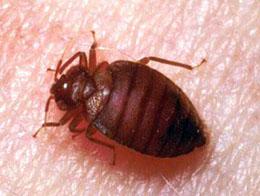How to Get Rid of Silverfish
First, Determine if You Have Silverfish or Firebrats
Before you start reading up on how to get rid of silverfish you need to make sure the bug you’re trying to get rid of is actually a silverfish. Believe it or not, there are several other small creepy bugs that look very similar to silverfish.
Second, Learn Why You Need to Get Rid of Silverfish ASAP
Besides the fact that there are nasty little bugs running around your home, there are other reasons why you will want to get rid of silverfish as soon as possible
Silverfish Facts » Why You Should Get Rid of Silverfish Right Now:
Silverfish don’t die or leave when it gets cold , they live up to 2-8 years…so when they find a home, they’re not leaving anytime soon!
Silverfish are most active at night and can jump up to two feet into the air (that’s high enough to get onto your bed!)
They can go up to a year without food , so removing all the things they eat in your basement won’t affect them it just motivates them to start exploring more parts of your house.
Most silverfish go unnoticed and will slip into cereal boxes, rice boxes, or anywhere they think is a good place for food or to lay eggs.
They can climb walls (so they can practically get everywhere inside without difficulty)
They have been around for 400 Million years , which probably is the reason why they are immune to most bug poison.
Silverfish eat things we surround ourselves with (paper, cardboard, glue) so at night when they come out for food they could be crawling everywhere!
Silverfish love toothpaste and eat the toothpaste remains off of toothbrushes, and have even been found INSIDE toothpaste containers!
Silverfish molt continuously throughout their lives leaving dead tiny body parts around your home!
Fortunately though, there has been no evidence that suggests that silverfish can spread or transmit diseases. Needless to say, this should still be more than enough reasons for you to want to get rid of the silverfish in your home as quickly as possible.
An Introduction to getting rid of silverfish
So now you probably realize that silverfish are a pretty tricky bug to get rid of…but just to recap:
Silverfish are immune to bug poison
They can go up to a year without eating or needing food
They don’t leave when it gets cold outside or if the house is uninhabited

Earwig & Silverfish Identification & Prevention
What are earwigs & silverfish?
Both earwigs and silverfish can be confused with each other but are two different species of insects. Both are occasional invaders, which means they live most of their life outdoors but sometimes move inside, seeking a damp environment when the weather becomes too hot and dry. Earwigs are reddish-brown, while silverfish are a silver color. Earwigs have pincers located at the end of their abdomens. Silverfish have a three-pronged extension at the end of their abdomens and move in a unique fish-like manner.
Are earwigs & silverfish dangerous?
While silverfish and earwigs certainly are not creatures you want living in your home, they aren’t dangerous pests. They don’t bite or sting people, and they aren’t known to spread diseases. Earwigs are a type of garden pest but only cause significant plant damage if their numbers are high. When disturbed, earwigs produce an odor that is not pleasant. Also, they can contaminate pantry items like flour, bread, and cookies. Silverfish living indoors may damage clothing, upholstery, and paper items by chewing on them. They also contaminate starchy pantry items like flour, cereals, pasta, and potatoes.
Why do I have a earwig & silverfish problem?
Silverfish and earwigs will move inside to take advantage of a home’s cool, damp areas and can become a problem in any home. Houston weather that becomes too hot, dry, or wet will drive these pests indoors. Earwigs and silverfish also hitchhike their way into homes in objects that were once outside like potted plants, newspapers, furniture, and boxes. Because they seek out areas of moisture, if these pests are in your home, there is a good chance there is a moisture problem present.
Where will I find earwigs & silverfish?
Silverfish and earwigs hide in damp, dark areas. They tend to gather near the foundations of a home under mulch, landscaping ties, leaf litter, compost piles, and trash cans. If it becomes necessary, they will move into homes and other structures through cracks in the foundation, exterior walls, and spaces under doors (especially basements doors). Once inside, they hide in areas that mimic their outdoor environments such as basements, bathrooms, crawl spaces, and laundry rooms.
How do I get rid of earwigs & silverfish?
The best way to live pest-free is to partner with the pest professionals at Pest Solutions. family wants to keep your family and home safe from earwigs, silverfish, and other pests. guaranteed services provide our home and business owners with fast, effective pest elimination
Silverfish
What are Silverfish and How to Get Rid of them
Silverfish have been around for millions of years and have been found in fossil records as early as the first land-living animals. Silverfish have survived for such a long time because they are known to survive in a variety of very tough environments. Silverfish are best known for their vast destruction of various household items such as books, photographs, artwork, clothing and accessories. Some people may be allergic to the faeces and cast skins (moults) of Silverfish, which may trigger conditions such as asthma
Description:
Silverfish are heavily segmented and soft-bodied insects, covered in fish-like scales. Depending on the age and species, they are between 2 – 18 mm in length, varying in colours of silver, gold, bronze and brown. The body shape is flattened from top to bottom; and when viewed from above, the body is wide at the head tapering to a pointed rear (abdomen). Often around the perimeter of the body are short fine hairs.
The head is small with two very small compound eyes on either side of the head, however, some species are eyeless. At the front of the head are a pair of very long and straight antennae, greater than half the length of the body. At the front and underside of the head are chewing mouthparts.
Behaviour:
Silverfish are fast runners; they can also jump and hop. When disturbed, silverfish either sit very still or swiftly scurry away. Silverfish also have an interesting and elaborate mating ritual.
Lifecycle:
After moulting and mating, adult females lay eggs in clutches of 7- 12 eggs, laying up 60 eggs at a time. In one lifetime, a female lays approximately 100 eggs. Eggs generally hatch within 20 days, however in sub-optimal conditions, they can take up to 40 days. Eggs hatch into juveniles (nymphs) which are similar in appearance to adults, only smaller and lighter in colour. Juveniles grow through 6 – 7 growth phases, shedding skin at each phase. Juveniles take 3 months to 3 years to reach full maturity. Silverfish can live for up to 6 years and continue to moult throughout their lifetime.
Household Bugs and Natural Remedies For Ridding Them
The arthropoda category includes almost every bug you can think of, including spiders, insects, centipedes, mites and butterflies. Arthropods make up 75 percent of life on Earth, so it’s no surprise that they have adapted to living in unison with humans and have taken advantage of our habitats as well.
When it comes to household bugs, these unwanted roommates can vary in visibility and impact on your home. One lone spider in a dusty corner may not harm anyone, but an infestation of bed bugs will definitely leave their mark. While it’s tempting to buy-out the bug spray aisle of your local hardware store if you have a bug infestation, these products can contain toxic chemicals that are unhealthy for you and your family (including your pets), as well as detrimental to the Earth.
Luckily, there are many common household items that can help you deal with your pest problem. These household remedies are easy to create and will help keep bugs out of your apartment in a safe manner. Save our visual for a quick reference on how to get rid of bugs the natural way!
While some landlords are responsible for pest control, they often will take a while to deal with the infestation or may use harmful products. Next time you spot one of these common household bugs, try taking preventative measures with these natural remedies.
Household bugs found in your kitchen
While bugs can be found in all parts of your home, here are a few of the most common pests in your kitchen — plus a few tips to keep them out.
How to Get Rid of Silverfish
If you’ve ever flicked the bathroom light on at night, you may have seen silverfish scurrying away from the bathtub or sink. These nocturnal creatures thrive in moist or humid environments, which is why they’re sometimes seen in the bathtub. Because they’re quick, catching them in a piece of paper to deposit them outdoors isn’t a practical option. Basic cleaning and moisture-prevention methods help keep these critters at bay, while a homemade trap can catch them.
Prevention
Because silverfish enjoy moisture, dry the bathtub after the last person has used it at night. Removing this moisture that they enjoy helps keep them away. If the faucet or showerhead drips, repair the drip as soon as possible, or place a small container in the tub to catch the water, dumping it frequently. Remove dust and stacks of books or magazines from the bathroom, as silverfish eat starch found in the book and magazine binding glues. They also eat some materials found in dust and enjoy hiding in dusty, untouched areas.
Trapping
Create a silverfish trap by covering the outside of a small glass jar with masking tape. Place the container in the tub at night, or along the sides of the tub — wherever you’ve noticed silverfish. The creatures will climb up the tape to get into the jar and won’t be able to climb out. Empty the jar outside away from the home, or fill the bottom of the jar with petroleum jelly, which the silverfish will stick to, unable to get out.



